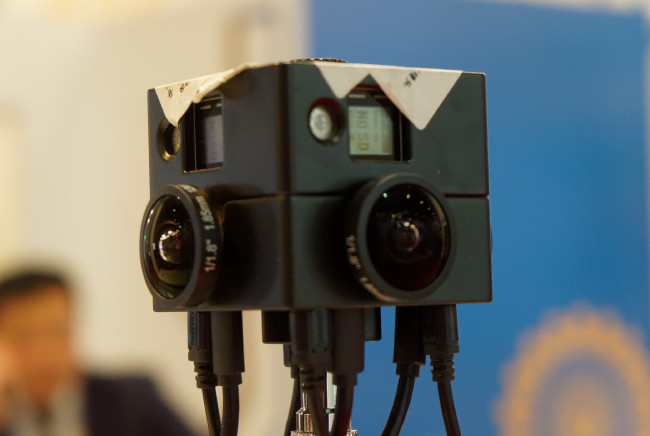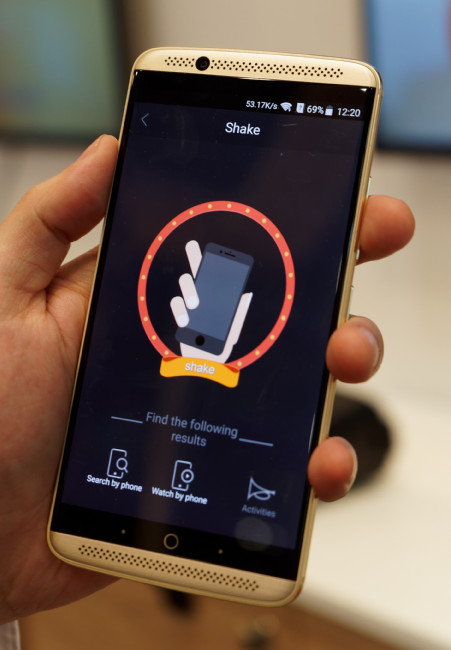ZTE was showing a new 360º VR capture camera that features live streaming of video. It combines four images to create a stream that can be relayed over both fixed and mobile internet connections. A highlight of the system is that the latency of the stream is just around two seconds, whereas some competitors, ZTE told us, introduce a latency of up to 20 seconds for stitching the images together. The camera uses ZTE’s own ‘elastic network’ technology which is central to its 5G and IoT strategies. The company was showing the videos using a Pico Neo headset, a VR headset that we saw at Laval Virtual a couple of weeks ago, and made by Goertek. It can also be used with smartphone-enabled VR viewers. ZTE showed the solution at the World Internet Converence in Wuzhen in November and was also showing it at MWC last month.
 ZTE’s 360 deg camera. Image:Meko
ZTE’s 360 deg camera. Image:Meko
The system delivers 2K P30 content but the HC100 STB can be pushed up to UHD at 60fps, if desired. ZTE is focusing on enabling an end-to-end system for live VR to support broadcasters and service providers. The STB can also be used for VR VOD applications.
Another feature of the STB is the ability to ‘cast’ content to a ZTE box from ‘anywhere’. Normally, casting only works on a single subnet and uses DNLA, we were told. However, the ZTE STB can receive instructions of where to find content to cast, so, we heard, the staff member in London that thought his parents in China might be interested in a particular piece of content could find it on his phone, then cast it to their STB. The system also supports casting the other way so that if you have to leave the screen before the end of a programme, for example, you could continue watching on a cell-based mobile device, not just on a Wi-fi device on the same network.
The user interface uses a ‘Shake shake’ concept to trigger the action. The company also uses the same system to allow a mobile device to display metadata about a programme very easily including items such as ‘product placements’.
 ZTE’s ‘Shake shake’ interface. Image:Meko
ZTE’s ‘Shake shake’ interface. Image:Meko
Finally, the company showed us its ‘Mosaic channels’ concept that allows a user to set up a custom front end to their service with their own favourite channels, services and apps. A special feature is a ‘personal channel’. Content can be dropped from the EPG onto a timeline to create a custom channel, rather than needing the user to switch channels. The channel ‘learns’ from the habits of viewers and will then start to highlight content that it thinks that the viewer might be interested in.

